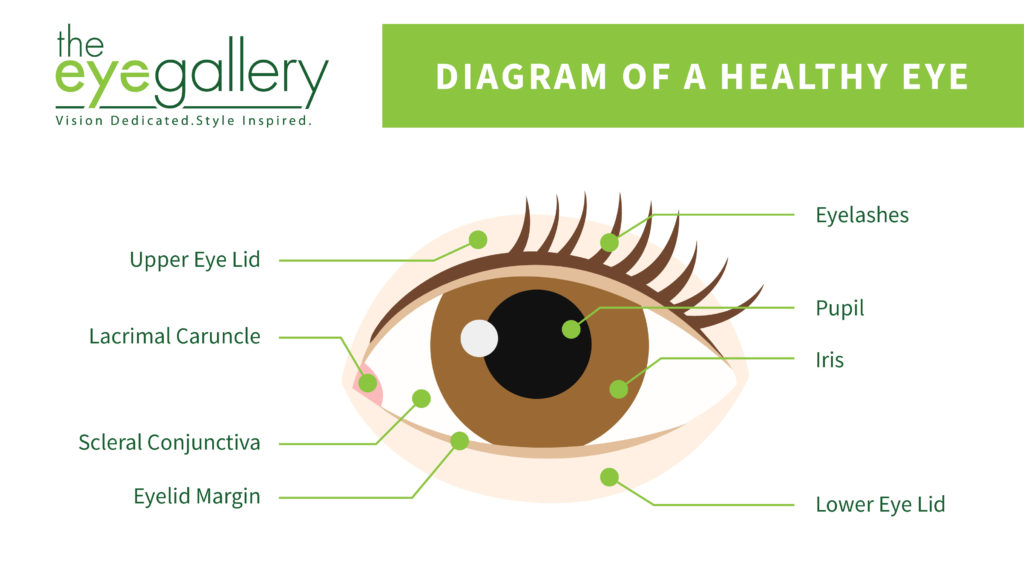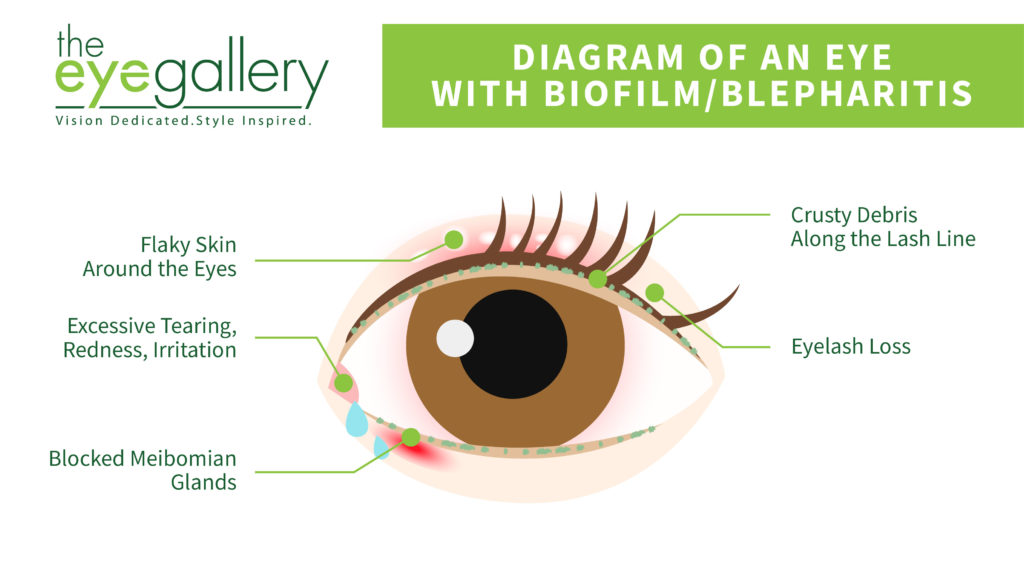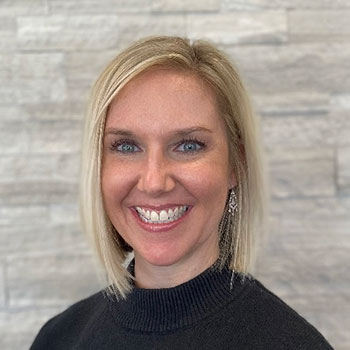When was the last time you washed your eyelids? For women, they’ve usually washed their face within the last 24 hours, either to remove makeup, or you’re just as part of their normal skincare routine. Some men wash their face daily, but for others, it’s just a part of their normal shower routine whenever that happens.
But when I bring up eyelid hygiene with my patients, almost every single one responds the same way: “You have to wash your eyelids?”
Yes, you have to wash your eyelids.
Eyelid hygiene is important for a few reasons, but one of the biggest is that it helps manage and prevent biofilm build-up.
Biofilm probably isn’t a term you hear very often, but it’s a really important one when it comes to your eye health, especially in terms of dry eye and blepharitis. So let’s talk a little bit about biofilms and how they can impact your eye health.
What is Biofilm?
To put it really very simply, a biofilm is a system of microorganisms that can grow on different surfaces. These microorganisms can be bacteria, fungi, or protists. Biofilms aren’t specific to the eyelid. In fact, the plaque that accumulates on your teeth is a type of biofilm. Algae or pond scum is another example of a biofilm. Gross, right?
A surface usually has to be wet or damp to allow biofilm growth. You probably don’t consider your eyelids to be particularly moist, but the margin (which is sometimes known as the waterline or the lashline) is always quite damp and warm, making it the perfect spot for biofilm to begin.

How Does It Develop?
The really simple answer to this question is that biofilms develop when microorganisms stick to a wet, warm, and nutrient-rich surface and multiply. The microorganisms ooze a slimy substance to help anchor them to the surface while the biofilm grows.
There are also a couple of factors that may make you more likely to develop a biofilm: a lack of eyelid hygiene, and lax contact lens habits.
Improper Eyelid Hygiene
A biofilm takes time to develop. Microorganisms must be introduced to a surface and given the chance to multiply for a real biofilm to exist. With enough warmth, moisture, and nutrients (all of which are present at your eyelid margins) a biofilm can thrive as long as it’s left alone.
If you do not clean your eyelids to the lashlines with the appropriate cleanser regularly, any bacteria that have interacted with the area have the opportunity to multiply and create a happy little ecosystem for themselves.
Contact Lens Care
We know that biofilms can develop on pretty much any moist surface. so it’s worth mentioning that biofilm could cause problems for your eyes even if they don’t develop on your eyelids directly.
Every time you put in your contact lenses, you should rinse out your contact lens case with water, and leave it open to dry during the day. Closing your contact lens case while you wear your lenses creates an excellent environment for a biofilm to form, especially if you leave any old solution in the case while you do.
If a biofilm forms in your contact lens case, it can transfer to your contact lenses themselves. Introduced in the biofilm to your eye can lead to serious corneal infections, including staph infections of the eye. These infections may have significant consequences like corneal damage, blurry vision, or even blindness.
Biofilms Are Linked to Dry Eye Disease & Blepharitis

Blepharitis is a chronic inflammation of the eyelids. It’s closely-linked to dry eye, as the two often co-exist. In fact, some doctors have proposed unifying the two conditions into one called DEBS or dry eye blepharitis syndrome.
Once the bacteria in a biofilm have reached critical mass, they provoke an inflammatory response from their host, IE, blepharitis. The inflammation causes the skin to become red and flaky, with skin and debris collecting in the eyelashes. The dead flaky skin provides more food for the bacteria.
Biofilm growth and the accompanying inflammation makes it extremely difficult for the meibomian glands to produce a special oil called meibum. Without meibum, your tears will evaporate far too quickly from the surface of your eye. This is called evaporative dry eye, and it’s the most common type of dry eye disease.
So What Can I Do?
Remember that you already take active steps to prevent biofilm with another part of your body. rushing your teeth every day prevents biofilm from building up and damaging the enamel on your teeth. Then every six months, you go for a professional cleaning to make sure you haven’t missed anything.
The concept is very similar for eye hygiene. Wash your face every day and pay special attention to your eyelids and lash line. Make sure you’re using a product that is eye-safe. I’d also recommend scheduling an appointment for a BlephEx treatment every year. I’ve written a blog entry on BlephEx, but for a quick explanation, BlephEx is an in-office treatment that removes biofilm build-up and debris from your eyelids and lash line. It can be done to help alleviate blepharitis, or as a proactive treatment to prevent biofilm buildup.
And of course, a major element of any eye health routine is an eye exam. Be sure to schedule your eye exam annually to keep your eyes healthy and strong.




